1/01/2006
12/04/2005
What's the big deal?
Apple has really come from nowhere with their world-dominating piece of gadgetry, with no real foothole in any part of the technological spectrum. The Mac was always something that "people who couldn't run a PC" bought, and always seemed inferior to everyone except, of course, the Mac owners themselves. So how on earth did Apple sieze upon the idea for a product which is now synonymous with the term 'mp3'?
There are of course many similar products out there which offer consumers significantly more 'bang for their buck', so to speak. Sony, Creative, and many other companies all have their fingers in the portable music (or portable media, as such products are now providing users with video, photos, etc) pie. Yet Apple and their gorgeous iPod occupy 70% of the market. iPod is still no. 1 on every kid's christmas wish list. And furthermore, the iPod is considerably more expensive than other similar products out there. So what is it that makes it so popular?
I think it comes down to something which Apple has used in recent times to set itself apart from regular Windows-based PCs.
Sex appeal.
Let's face it - the iPod is sexy. I don't know if I've ever seen something four inches long and said "Goddamn that's hot" in my entire life, before I bought my iPod mini. And now the nano? That's like the Mena Suvari of iPods. While Creative and Sony bungle along with their copycat products, they never quite seem to match Apple for complete and utter sexyness.
Perhaps there's more to it, though? Let me know ;)
12/02/2005
another gem from news.softpedia.com: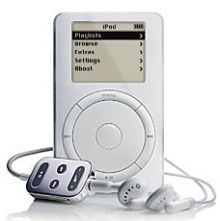 There's not a living soul who isn't thrilled about iPod nano. Steve Jobs can congratulate himself once again for hitting the jackpot.Like a magician, Steve Jobs has succeeded to set a new standard for MP3 Players, which won't be easy to match. But what will happen after iPod nano?
There's not a living soul who isn't thrilled about iPod nano. Steve Jobs can congratulate himself once again for hitting the jackpot.Like a magician, Steve Jobs has succeeded to set a new standard for MP3 Players, which won't be easy to match. But what will happen after iPod nano?
In less than a year, the iPod nano revelation would have lost its hypnotizing power forcing Steve Jobs to come up with something new. But what improvements can be made to an almost perfect device? A higher storage capacity, an extended battery life (over the 14 hours already offered by iPod nano)? Surely this will be the iPod nano we'll see 6 months from now. And then what? iPod video or iPod pico, 60% smaller than the nano? (any smaller than that and we would lose it...)I think that we are in for something more spectacular.
Talking about the changes Microsoft is going through, Steve Jobs made an interesting comment that it's wrong to separate the technology in applications, hardware and services. Hence, in two years, when the batteries will be advanced enough to ensure 24 hours of functioning time, and the storage units (flash memories or hard-disk) will be enough for tens of GBs of space, Steve Jobs' dream will come true: Mac OS X running on an iPod.
Think about it for a second what it would mean to run Mac OS X on the iPod nano, provided that the device has Internet access provided via a WiMax connection. And if it comes with VoIP support, would you ever buy a PDA or a cell phone? I think not.
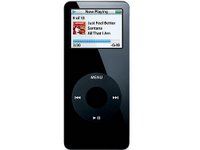 Do you know how many millions of iPods are out there? Deutsche Bank says that by the end of the year, 31 million units will be sold. What's even more interesting is that the users' appetite for Apple's well-known player won't be any different next year, Deutsche Bank estimating that in 2006, the Cupertino company will sell 43 million iPods. If the figures are confirmed, we cannot help but wonder where will iPod's market share stop, the player already owning 75% of the MP3 player market.
Do you know how many millions of iPods are out there? Deutsche Bank says that by the end of the year, 31 million units will be sold. What's even more interesting is that the users' appetite for Apple's well-known player won't be any different next year, Deutsche Bank estimating that in 2006, the Cupertino company will sell 43 million iPods. If the figures are confirmed, we cannot help but wonder where will iPod's market share stop, the player already owning 75% of the MP3 player market.In any case, iPod nano will be one of the engines that ensure Apple the ascension to online music download domination. In fact, Deutsche Bank's report confirms that Apple is the company that gets the most out of digital music. The report also mentions that Apple would be the perfect company to become a distributor of video content.
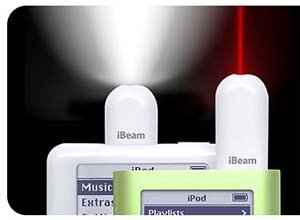 Funky, huh? :)
Funky, huh? :)Introducing the Griffin iBeams, ready for your dock-connector iPod or iPod mini. The snap-on flashlight is great for finding keys in the dark. The other half of the package is a class IIIA laser pointer, handy for iPod-friendly presentations and other, less professional pursuits. Both units come with a snap-on protective cap that can be attached to any keychain for convenient portability and accessibility.
The iBeams flashlight is surprisingly functional when a quick beam of light is required in a dark car or doorstep. The iBeams laser pointer is an amazingly powerful red laser beam that is capable of being seen over a quarter of a mile away. Need we say how much fun this could be?
The Griffin iBeams represent a new category of iPod accessories that are fun, functional and easy on the "iPod gear" line of your budget
 Apple New Zealand denies all knowledge of any impending launch of the iTunes music store on the local market, despite former Mount Roskill resident Russell Crowe telling Australian radio that Apple Australia is poised to launch its version of the store.Computerworld understands Apple would incorporate any New Zealand iTunes store into its Australian counterpart and run them both as one unit, however general manager of Apple New Zealand, Steve Ford, says he knows nothing about any impending launch of iTunes New Zealand."I can't comment at all on the Australian situation but there's been nothing going on at this end." Apple New Zealand is an authorised distributor rather than an Apple-owned subsidiary.
Apple New Zealand denies all knowledge of any impending launch of the iTunes music store on the local market, despite former Mount Roskill resident Russell Crowe telling Australian radio that Apple Australia is poised to launch its version of the store.Computerworld understands Apple would incorporate any New Zealand iTunes store into its Australian counterpart and run them both as one unit, however general manager of Apple New Zealand, Steve Ford, says he knows nothing about any impending launch of iTunes New Zealand."I can't comment at all on the Australian situation but there's been nothing going on at this end." Apple New Zealand is an authorised distributor rather than an Apple-owned subsidiary.
12/01/2005
iPod Photo Review
 One of the theater's most enduring slogans is "Leave 'em wanting more." And that's exactly how we feel about the new Apple iPod Photo. On the one hand, it's still the music player to beat, now with a color screen and easy-to-use photo-viewing features. But while we enjoyed the performance, we were left wanting more.
One of the theater's most enduring slogans is "Leave 'em wanting more." And that's exactly how we feel about the new Apple iPod Photo. On the one hand, it's still the music player to beat, now with a color screen and easy-to-use photo-viewing features. But while we enjoyed the performance, we were left wanting more.
In addition to its familiar music duties, the iPod Photo stores and displays photos—thousands and thousands of them—on its 40GB ($499 direct) or 60GB ($599) hard drive and 2-inch color screen. Options in the new iTunes 4.7 let you synchronize the images in a specific folder, so that your photos are always up to date. It can also turn collections in Adobe Photoshop Album 2.0 or Photoshop Elements 3.0 into iPod Photo slideshows—a nice touch for hobbyists who have committed their photo libraries to those apps.
With the new color screen, Apple omitted a brightness or contrast control, but you can still adjust the auto-off time for the backlight. We found the display to be just a bit dimmer than we would have preferred, and the color balance is slightly shifted towards the red, but not objectionably so. (Oh, and thanks to the addition of color, the solitaire game is finally playable.)
You can arrange your photos in albums, though the album view is fixed in a 5-by-5 image grid that yields thumbnails approximately 3/16 of an inch high by 1/4 of an inch wide. It can be difficult to distinguish one image from another, especially when they have similar subjects or backgrounds. But navigating through the images is a joy. Click on a thumbnail to make it full screen, and you can quickly—and we mean quickly—scroll forwards of backwards through the library by running your thumb around the scroll wheel. The iPod Photo stores images in an internal database in a resolution suitable to its 220- by 176-pixel screen or to a TV screen (if you connect the included audio-video breakout cable or use the S-Video connector on the provided docking base). Slide show settings allow you to control the amount of time that each slide is on the screen, turn on a wipe transition, and select one of your playlists as a background music source. The TV image is sharp and stable, and Apple claims 15 hours of music playing or 5 hours of slide show viewing from the rechargeable lithium ion battery.
The iPod Photo stores images in an internal database in a resolution suitable to its 220- by 176-pixel screen or to a TV screen (if you connect the included audio-video breakout cable or use the S-Video connector on the provided docking base). Slide show settings allow you to control the amount of time that each slide is on the screen, turn on a wipe transition, and select one of your playlists as a background music source. The TV image is sharp and stable, and Apple claims 15 hours of music playing or 5 hours of slide show viewing from the rechargeable lithium ion battery.
Musically, the iPod Photo is identical in performance to the fourth-generation iPod, which is to say excellent. One addition: You can now view album art on the Now Playing screen.
Odd, minor limitations keep the iPod Photo from being a killer implementation. You can't zoom in or pan around your images, and you can't rotate photos; all adjustments have to be made before you download the images. If you want to store full-resolution pictures that can be transferred to another computer or printed, you have to select that option in iTunes. If you forget, you'll wind up with low-res images on the unit's hard drive that lack full-resolution counterparts.
Also, the iPod Photo insists that only one computer can be its source of photos. If you connect it to another computer it will ask you if you want to replace all of the images currently on the iPod with the images currently on the computer. There is no way to add to the photo database other than adding photos to the "home" machine and updating the iPod. Likewise, digital photographers can still use the Belkin Digital Camera Link or a card reader on the road to offload images to the iPod Photo, but you will not be able to display those images on the iPod Photo (since they do not pass through iTunes).
As a music player, the iPod Photo is still virtually unassailable. But in the growing arena of portable multimedia players, it is not king of the hill. For example, the svelte Archos Gmini 400 matches the iPod Photo's music abilities, trumps it as a photo viewer/storage companion, and handles video to boot.
That said, for users looking for a great music player that also delivers the ability to store, view, and display photos, the iPod Photo is the latest in this line of must-have devices.
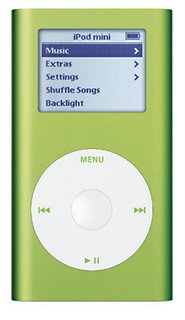 We liked the original iPod mini for its superior ergonomics, easily readable screen, jazzy colors, and good music performance. Audiophiles have complained, however, that the mini just doesn't have a whole lot of kick at the low end, and our subsequent testing confirmed that. Apple doesn't talk about its players' audio performance, and the company is running true to form here. They've improved the mini's bass performance, but would never say so for fear of tarnishing the reputation of the earlier product.
We liked the original iPod mini for its superior ergonomics, easily readable screen, jazzy colors, and good music performance. Audiophiles have complained, however, that the mini just doesn't have a whole lot of kick at the low end, and our subsequent testing confirmed that. Apple doesn't talk about its players' audio performance, and the company is running true to form here. They've improved the mini's bass performance, but would never say so for fear of tarnishing the reputation of the earlier product.We eagerly downloaded our suite of test files and music to the new mini, and our instruments confirmed what our ears were telling us. The extra bass is not immediately apparent unless you listen through something other than the stock earbuds. It also helps to play some tracks with deep, overproduced bass, such as Billy Joel's "River of Dreams" or anything by Sublime. But the improvement is also evident on orchestral pieces, with clear double bass and bass drum parts.
We measured some weakness in the very lowest register, between 20 and 30 Hz, but unless you listen extensively to pipe organ concertos, there isn't much to be heard in that range anyway. From 30 Hz on up, the iPod mini is in full control, reproducing sound cleanly and accurately right up through the limits of human hearing.
Unlike some other players, the iPod mini remains largely clean with EQ on, and what increased harmonic distortion we did see was well within acceptable limits. We measured less than 0.1 percent distortion on both channels. The 6GB iPod mini played our loudness track at 104 to105 dB, with 109 dB peaks through its standard earbuds. Harmonic distortion is nearly 10 dB higher at these extremes, not that you'd notice under such an aural assault.
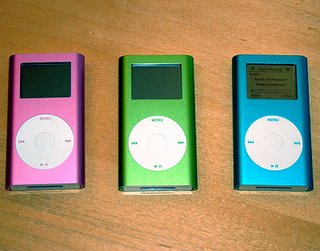 The new iPod mini's other features are mostly unchanged, except for one cute addition: The player automatically pauses when you pull out the earphone plug. It's a nice counterpoint to the feature that automatically starts the player when you insert the earphone plug. The alarm is louder too, though you'd still need the acuity of a nervous jackrabbit to hear it in anything other than a quiet room. But unlike other players in its category (such as the iriver H10 and Rio Carbon Pearl), the iPod mini still does not include FM radio or voice recording.
The new iPod mini's other features are mostly unchanged, except for one cute addition: The player automatically pauses when you pull out the earphone plug. It's a nice counterpoint to the feature that automatically starts the player when you insert the earphone plug. The alarm is louder too, though you'd still need the acuity of a nervous jackrabbit to hear it in anything other than a quiet room. But unlike other players in its category (such as the iriver H10 and Rio Carbon Pearl), the iPod mini still does not include FM radio or voice recording.The 6GB iPod mini is a worthy upgrade to a wildly popular player. With the addition of an FM receiver and perhaps a recording function, it would be perfect.
Apple Computer Inc.'s sleek iPod nano music player was among the top-selling electronic items on Amazon.com on Friday and some models sold out on a top retailer's Web site as consumers stocked up on holiday gifts on one of the year's busiest shopping days.
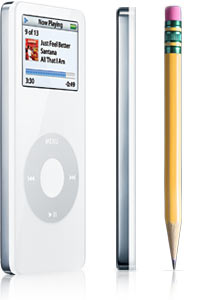 Apple's black iPod nano with 2GB of storage, or enough to hold 500 songs, was the sixth best-selling electronic gadget on Amazon.com's list of most popular items, which is updated hourly. A white version was No. 10 on the list. Amazon was selling the nanos for $199.88.
Apple's black iPod nano with 2GB of storage, or enough to hold 500 songs, was the sixth best-selling electronic gadget on Amazon.com's list of most popular items, which is updated hourly. A white version was No. 10 on the list. Amazon was selling the nanos for $199.88.Retailer Best Buy Co.'s Web site was sold out of both the white and black versions of the 4GB nano priced at $249.99. And the nano wasn't the only popular device. A spokeswoman for the retailer said Best Buy limited the number of connections to its site due to heavy volume related to the launch of Microsoft Corp's Xbox 360 video game console last week.
Best Buy was the retail launch partner for the new Xbox.
Apple has sold more than 28 million iPods since they were introduced in 2001, helping revive fortunes of a company that was increasingly dwarfed by Microsoft Corp.'s dominant Windows desktop operating system. Apple has about 75% of the worldwide market for digital music players, according to market research firm NPD Group.
Apple introduced its credit card-sized nano in September to replace the iPod mini, which was then the best-selling iPod version. Tim Cook, Apple's worldwide head of sales and marketing, last month called demand for the nano "staggering."
Apple shares have traded at a premium to other computer makers due to the iPod's success.
An Apple spokeswoman was not available for comment on the iPod sales.
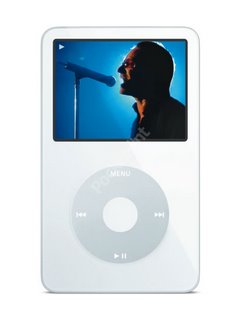 Steve Jobs, CEO of Apple, has high hopes for the latest incarnation: “Because millions of people around the world will buy this new iPod to play music, it will quickly become the most popular video player in history”. But does the new offering from Apple have what it takes to match the hype? We have a look and find out.
Steve Jobs, CEO of Apple, has high hopes for the latest incarnation: “Because millions of people around the world will buy this new iPod to play music, it will quickly become the most popular video player in history”. But does the new offering from Apple have what it takes to match the hype? We have a look and find out.There is no denying it the player is small and sleek. Like the iPod Nano, the 5th generation of iPod as been squeezed and squashed to be even thinner than previous models. Of the 30Gb model, Jobs said that it was “30% thinner than the current 20Gb model” and putting it up against a now old 4th generation unit, you could noticeably see the difference in size. Likewise the 60Gb version is also boasting a thin exterior and its dimensions make it 12% smaller than the old 20Gb as well.
With the flattening the screen has got larger, not as large as most people had hoped and certainly in our mind not large enough to really enjoy watching videos on. At 320x240 or 2.5 inches the screen is smaller than most new digital cameras on the market and it's here that I think Apple has missed a trick. How it is expecting to be able to fend off competition from the likes of Sony, with its lusciously large screened PSP or any other media player contender is beyond us. Videos are 260,000 colours and MPEG4.
Apple has also used its H.264 protocol at 30fps and it's very smooth if not a little small. The smaller model - at 30 gigabytes - is priced at around £219 and can
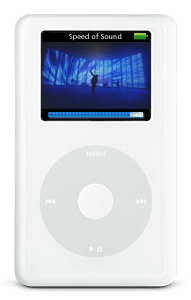 hold 7,500 songs, 12,500 photos and 75 hours of video.The larger model - at 60 gigabytes - will be able to hold 15,000 songs, 25,000 photos and 150 hours of video. It will cost around £299.
hold 7,500 songs, 12,500 photos and 75 hours of video.The larger model - at 60 gigabytes - will be able to hold 15,000 songs, 25,000 photos and 150 hours of video. It will cost around £299.On the whole, the menu system is the same as the iPod Nano interface except for a few differences. One is the introduction of four clocks to tell you the world time, something jet-setting iPod owners will obviously be dieing to know. They will also be happy to find out that they can time themselves with the addition of a stopwatch on board as well.
Aesthetically the iPod now looks very much like the iPod Nano only bigger. Just the same, the new models will come in two colours; black and white however it will be interesting to see whether the same complaints regarding the scratchiness of the screen dog the new player as they have the Nano in the 5 weeks since its launch.
There’s a new iPod on the scene—the iPod nano—and we’ve got one. What follows are our first impressions of this very impressive little player.
As you’ve undoubtedly heard, the iPod nano comes in two colors (white and black) and two configurations ($199 for 2GB, and $249 for 4GB). Each model stores music on a memory card rather than a hard drive, bears a crisp color display, and—like current full-sized iPods and the now-defunct iPod mini—sports a click wheel. Unlike with other iPod models, you’ll find the headphone port on the bottom of this iPod, next to the dock connector. The Hold switch remains, all alone, on the iPod nano’s top.
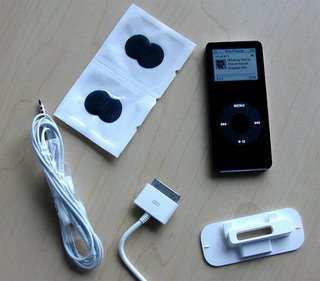 The nano is as thin and light as Steve Jobs suggests, weighing just 1.5 ounces, and is as thick as a stack of six credit cards. Despite its small size, the markings on the click wheel are clear and the click wheel is responsive. The screen really does look great—it’s very bright and readable. And the nano feels perkier than my other iPods, scrolling very quickly through a window full of songs, moving rapidly from one screen to the next, and flying through pictures.
The nano is as thin and light as Steve Jobs suggests, weighing just 1.5 ounces, and is as thick as a stack of six credit cards. Despite its small size, the markings on the click wheel are clear and the click wheel is responsive. The screen really does look great—it’s very bright and readable. And the nano feels perkier than my other iPods, scrolling very quickly through a window full of songs, moving rapidly from one screen to the next, and flying through pictures.In the iPod nano’s narrow box you’ll find the iPod itself, a USB 2.0 cable, Apple’s standard earbuds, two sets of foam covers for the earbuds, and an iPod Dock Adapter—a white plastic insert that will fit in future iPod dock connector accessories.
Syncing
The nano can be synced to a Mac or PC by a USB 2.0 connection only, although you can charge it over a FireWire connection. (At this point I’m not sure what this means for booting from the device.)
When you sync the nano you’ll learn that it will hold both music and photos. The iPod Setup Assistant suggests that music takes priority, but this suggestion is a little confusing. When I plugged in the nano and saw the Assistant’s admonition that “iTunes will first copy all of your music to the iPod and then use the remaining space for photos,” I assumed that no photos would be copied to the nano as my music library should take up all its space. That turned out to not be the case.
Instead, iTunes reserved about 135MB of space, copied 889 songs to the nano, and then added 86.4MB of photos to the iPod. Had I told iTunes to not copy any photos to the nano, it would have moved more music to the device.
Like other iPods with small hard drives, if your music collection exceeds the capacity of the nano, iTunes will offer to create a selection of music for you. As with other iPods, this automatic playlist-creation feature isn’t terribly discerning. For example, it placed all my five-second Griffin iTrip configuration tones on the nano.
The nano syncs as quickly as other click wheel iPods I’ve owned, taking around 7 minutes to copy approximately 900 songs to the device. Music syncing isn’t slowed down even when iTunes optimizes photos for the nano—the two processes occur at the same time without affecting music synchronization.
Not Quite a Full-Grown iPod
Although the iPod nano can display pictures and slideshows like today’s color iPods, it doesn’t have all the capabilities of these iPods. For example, you’ll find no TV Out commands in its Slideshow Settings window because it can’t project pictures to an attached television. Also, it doesn’t work with Apple’s iPod Camera Connector or Belkin’s Media Reader, which means you can’t upload pictures to it. And although the Diagnostic Screen shows a LineIn test, current iPod microphones require a connection to the Remote Control port as well, which is missing on the nano.
New Features
 The iPod behaves exactly like you’d expect it to. For the most part, menu navigation is like other iPods. But this iPod includes a few extra features. The first is the Stopwatch, which you find in the Extras screen. The Stopwatch will track total time and lap time. When you click Done to stop the watch, it saves your times in a Stopwatch screen. Select one of these entries, click the Select button, and you’ll see a summary that displays the date and time of the event, total time, each lap time, and such summary statistics as total time, longest and shortest laps, and average lap time.
The iPod behaves exactly like you’d expect it to. For the most part, menu navigation is like other iPods. But this iPod includes a few extra features. The first is the Stopwatch, which you find in the Extras screen. The Stopwatch will track total time and lap time. When you click Done to stop the watch, it saves your times in a Stopwatch screen. Select one of these entries, click the Select button, and you’ll see a summary that displays the date and time of the event, total time, each lap time, and such summary statistics as total time, longest and shortest laps, and average lap time.Speaking of time, this iPod includes a new clock, which shows the current time in an analog and digital display. Unlike previous clocks, it also lets you view multiple clocks—just click the New Clock entry at the bottom of the screen, choose a region, and select a major city in that region. The clock will change time to denote night. Each clock offers its own alarm as well as its own sleep timer.
The last new feature shown off by Jobs during his presentation was Screen Lock, a feature for, well, locking your iPod’s screen. Like a cheap bike lock, this lock lets you create a four-digit password using numbers from 0 - 9. The interface is nothing but cute, featuring a round combination wheel with four digits above. To move from one digit to another use the Next and Previous buttons. Clicking the Select button also takes you to the next digit and, when you reach the final digit, sets the code. When locked you can pause and play the iPod but nothing more—you can’t even adjust the volume because turning the wheel adjusts the currently selected digit. Even when you reset the iPod it boots back into the Screen Lock screen.
One possible flaw in this scheme is that once you’ve set the combination, lock the iPod, unlock it again, and then later return to the Screen Lock screen to switch on the lock, the iPod tells you what the combination is.
Performance
We’ve played with the new nano for only a couple of hours and so it’s too soon to issue a final judgement. I can say that everyone in the Macworld offices who’s touched it has been thrilled with its looks, and many have been awed by how such a tiny device acts just like a much-larger iPod. We’ve also been impressed by its screen and the responsiveness of its controls. We’ll look far more deeply into the iPod nano’s capabilities and performance in our upcoming review, but at first blush, this one looks like a winner.